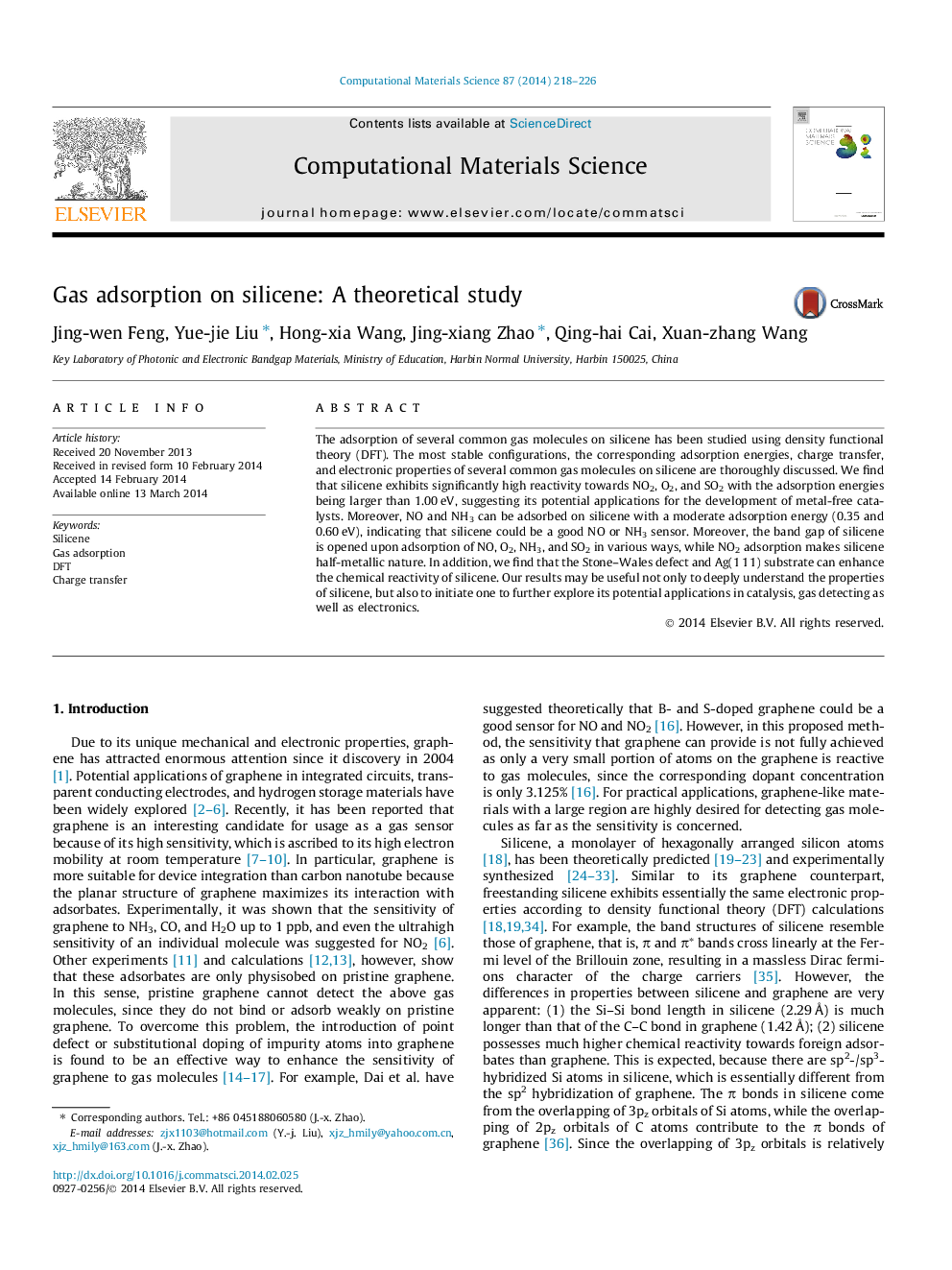| Article ID | Journal | Published Year | Pages | File Type |
|---|---|---|---|---|
| 1560561 | Computational Materials Science | 2014 | 9 Pages |
Abstract
The adsorption of several common gas molecules on silicene has been studied using density functional theory (DFT). The most stable configurations, the corresponding adsorption energies, charge transfer, and electronic properties of several common gas molecules on silicene are thoroughly discussed. We find that silicene exhibits significantly high reactivity towards NO2, O2, and SO2 with the adsorption energies being larger than 1.00Â eV, suggesting its potential applications for the development of metal-free catalysts. Moreover, NO and NH3 can be adsorbed on silicene with a moderate adsorption energy (0.35 and 0.60Â eV), indicating that silicene could be a good NO or NH3 sensor. Moreover, the band gap of silicene is opened upon adsorption of NO, O2, NH3, and SO2 in various ways, while NO2 adsorption makes silicene half-metallic nature. In addition, we find that the Stone-Wales defect and Ag(1Â 1Â 1) substrate can enhance the chemical reactivity of silicene. Our results may be useful not only to deeply understand the properties of silicene, but also to initiate one to further explore its potential applications in catalysis, gas detecting as well as electronics.
Related Topics
Physical Sciences and Engineering
Engineering
Computational Mechanics
Authors
Jing-wen Feng, Yue-jie Liu, Hong-xia Wang, Jing-xiang Zhao, Qing-hai Cai, Xuan-zhang Wang,
